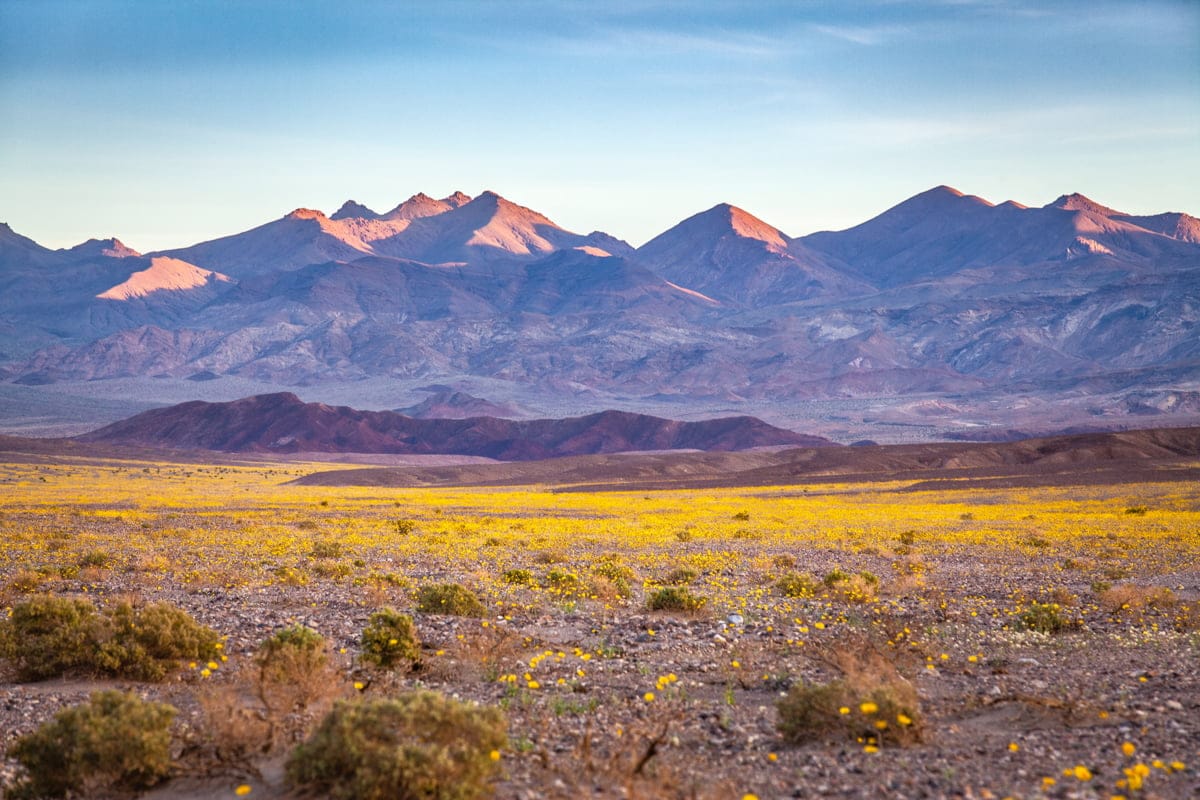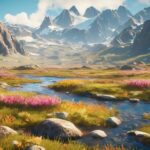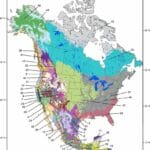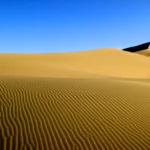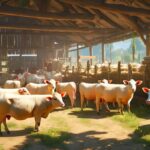Get ready for an adventure through the amazing natural habitats of North America! From the frigid Arctic tundra to the lush rainforests, each place is like its own little world, filled with plants and animals you won’t find anywhere else. We’ll explore how these different biomes work together to create a beautiful and diverse continent. So come on, let’s dive in and discover the wonders of North America’s biomes!
North America’s Biomes
North America is a continent of diverse landscapes, ranging from icy tundras to scorching deserts. These distinct environments, known as biomes, are like unique natural communities, each shaped by its climate, soil, and the plants and animals that call it home. Let’s take a journey across this vast continent and explore the incredible variety of North America’s biomes.
The Frozen North: Tundra
Imagine a land where the ground remains frozen, even in the summer. This is the tundra, a vast expanse stretching across the northernmost parts of North America. The soil here, called permafrost, never fully thaws, creating a challenging environment for life. However, hardy plants like mosses and lichens manage to survive, providing a food source for caribou and musk oxen. These herbivores, in turn, become prey for wolves and polar bears.
A Sea of Green: Coniferous Forests
Moving south from the tundra, the landscape transitions into a sea of green – the coniferous forests. These forests, also known as taiga or boreal forests, are dominated by evergreen trees like spruce, fir, and pine. Their conical shape and waxy needles help them shed snow and conserve water in the cold climate. This biome teems with life, from large herbivores like moose and elk to predators such as lynx, wolverines, and a variety of owls.
Where the Buffalo Roamed: Prairies
Imagine endless grasslands, waving in the wind, stretching as far as the eye can see. These are the prairies, once home to massive herds of bison. Today, these grasslands, also called plains or steppes, are still home to a rich diversity of life. While bison numbers have dwindled due to human activity, efforts are underway to restore their populations. Other resilient creatures like prairie dogs, pronghorn antelope, and coyotes have adapted to the wide-open spaces and seasonal changes.
A Tapestry of Color: Deciduous Forests
As we continue southward, the coniferous forests give way to deciduous forests. Here, the seasons paint a vibrant tapestry of colors. In the spring, trees like oak, maple, and birch unfurl their leaves in a burst of green. As summer fades into autumn, these leaves transform into brilliant shades of red, orange, and gold before falling to the ground, creating a rich carpet on the forest floor. This cycle of leaf growth and decomposition provides nutrients for a diverse array of plants and animals, including deer, black bears, foxes, and a multitude of bird species.
A Land of Extremes: Deserts
Deserts might seem desolate at first glance, but they are far from lifeless. These arid regions receive very little rainfall, forcing plants and animals to develop remarkable adaptations for survival. Cacti, with their spines and ability to store water, are iconic desert dwellers. Other plants sprout quickly after rare rainfall, bloom, and produce seeds all within a short period. Animals like rattlesnakes, Gila monsters, roadrunners, and kangaroo rats have evolved to thrive in this harsh but beautiful environment.
A Symphony of Life: Tropical Rainforests
Tucked away in the southeastern United States and parts of Mexico, we find a completely different world – the tropical rainforests. These lush forests are characterized by high temperatures, abundant rainfall, and incredible biodiversity. Towering trees, draped with vines and epiphytes (plants that grow on other plants), create a multi-layered canopy, providing a home for countless species of insects, amphibians, reptiles, birds, and mammals. From colorful parrots and toucans to jaguars and monkeys, the rainforest is a symphony of life.
This journey through North America’s biomes highlights the continent’s incredible natural heritage. Each biome is a unique testament to the power of life to adapt and thrive in a variety of conditions. It’s also a reminder that these environments are interconnected and influence each other in complex ways. Understanding and appreciating the diversity of biomes is crucial for conserving these natural wonders for generations to come.
What are the 7 Biomes of North America?
While often simplified into a handful of categories, the tapestry of biomes in North America is incredibly complex. Some experts suggest there could be as many as seven distinct biomes on the continent. This highlights the nuanced nature of ecosystems and the ongoing research that continues to refine our understanding of the natural world. Let’s explore these potential biomes:
- Tundra: Characterized by permafrost, a layer of permanently frozen soil, and a short growing season. Vegetation is limited to low-growing plants like mosses, lichens, and dwarf shrubs. Animals like caribou, musk oxen, and arctic foxes have adapted to the extreme cold and limited food availability.
- Coniferous Forest: Dominated by cone-bearing evergreen trees like spruce, fir, and pine, these forests are adapted to cold winters and moderate precipitation. Animals found here include moose, elk, wolves, and a variety of birds.
- Prairie: Characterized by vast grasslands with fertile soils, prairies were once home to huge herds of bison. Today, much of this biome has been converted to agriculture, but efforts are underway to restore native prairie ecosystems. Remaining areas support animals like prairie dogs, pronghorn antelope, and coyotes.
- Deciduous Forest: Known for their vibrant fall colors, deciduous forests are characterized by trees that lose their leaves in autumn. These forests thrive in areas with moderate rainfall and distinct seasons. A wide array of animals, including deer, black bears, raccoons, and numerous bird species, inhabit these forests.
- Desert: Defined by low rainfall and extreme temperatures, deserts may seem barren but host a surprising diversity of life. Plants like cacti and succulents have adapted to conserve water, while animals like rattlesnakes, lizards, and desert tortoises have evolved strategies to cope with the heat and dryness.
- Tropical Rainforest: Found in areas with high temperatures and abundant rainfall, tropical rainforests are incredibly biodiverse. The dense vegetation, with its multiple layers, supports a wide variety of plants and animals, including monkeys, jaguars, snakes, and a vast array of insects.
- Mediterranean Woodland and Shrubland: This biome, sometimes considered part of the Temperate Broadleaf and Mixed Forests, is characterized by hot, dry summers and mild, wet winters. It’s found primarily in California and the Baja California peninsula and is known for its diverse plant life, including drought-tolerant shrubs and evergreen trees.
What is the Largest Biome in North America?
Of all the incredible biomes found in North America, the largest is the grassland biome, encompassing the vast prairies and plains that stretch across the continent. While it might appear relatively uniform at first glance, the grassland biome is teeming with life, particularly grasses that have adapted to thrive in the region’s extreme weather conditions. This biome’s dominance speaks to the resilience of nature and the power of adaptation in shaping ecosystems.
Does the US have all 5 biomes?
The United States, with its diverse geography and range of climates, is home to a remarkable variety of ecosystems. In fact, it encompasses representatives of all five major biomes found globally. From the icy tundra of Alaska to the lush tropical rainforests of Hawaii, the US offers a glimpse into the incredible range of life on Earth. This vast array of biomes highlights the ecological significance of the US and the importance of conservation efforts to protect these diverse ecosystems.
Why does North America have so many biomes?
The incredible diversity of biomes found in North America can be attributed to several key factors.
- Latitude: The continent’s vast north-south span exposes it to a wide range of solar radiation, leading to temperature gradients that influence the distribution of plant and animal life.
- Altitude: The presence of mountain ranges like the Rockies and the Appalachians creates elevational gradients, resulting in cooler temperatures and different vegetation patterns at higher elevations, even within the same latitude.
- Precipitation Patterns: Variations in rainfall across the continent, influenced by factors like proximity to oceans and prevailing wind patterns, contribute to the formation of diverse biomes, from arid deserts to lush rainforests.
These factors, combined with geological history and evolutionary processes, have resulted in the remarkable mosaic of biomes that characterizes North America. This diversity underscores the continent’s ecological significance and the need for continued research and conservation efforts to understand and protect its natural heritage.
Considering planning your next vacation? Discover the many gorgeous and dramatically different biomes in America and which states they’re located in.
